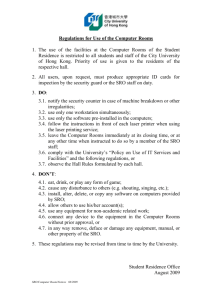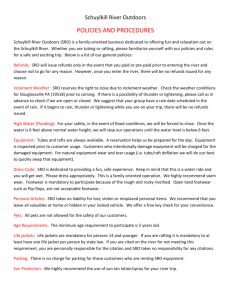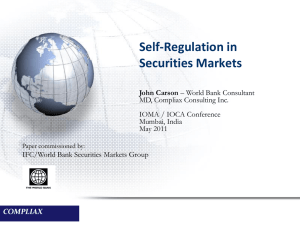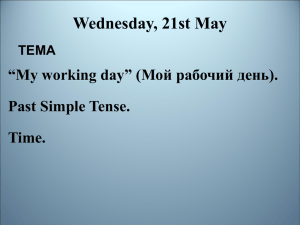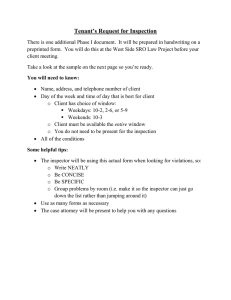Iron oxide nanocomposite magnets produced by partial reduction of
advertisement
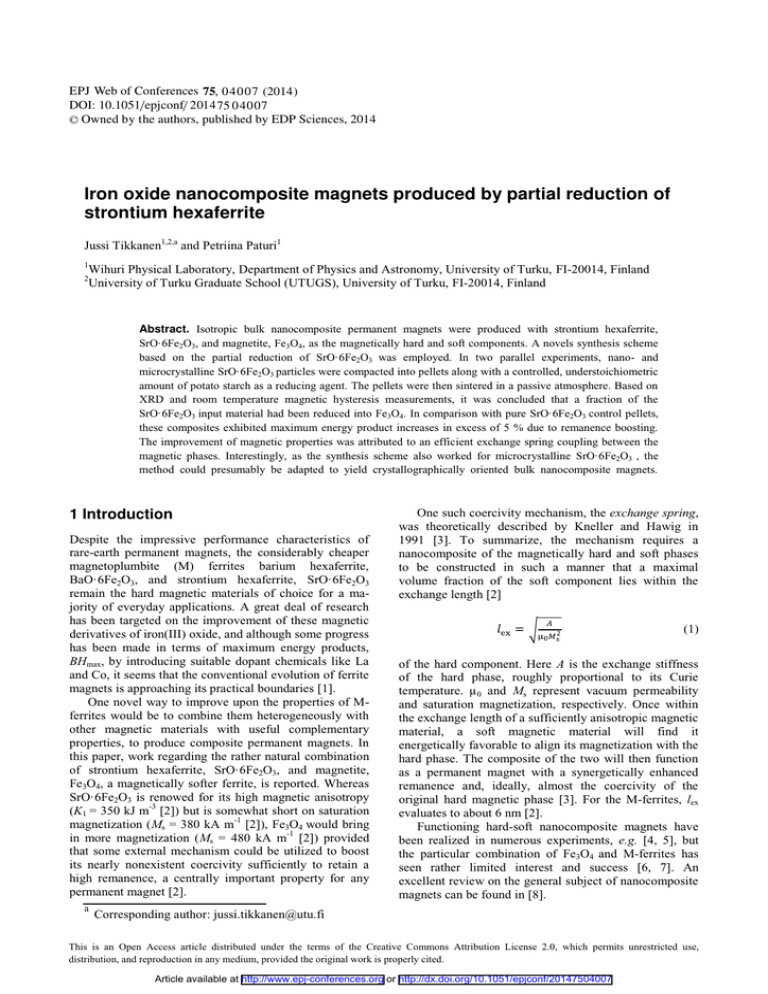
EPJ Web of Conferences 75, 04007 (2014)
DOI: 10.1051/epjconf/ 201 4 75 04007
C Owned by the authors, published by EDP Sciences, 2014
Iron oxide nanocomposite magnets produced by partial reduction of
strontium hexaferrite
Jussi Tikkanen1,2,a and Petriina Paturi1
1
2
Wihuri Physical Laboratory, Department of Physics and Astronomy, University of Turku, FI-20014, Finland
University of Turku Graduate School (UTUGS), University of Turku, FI-20014, Finland
Abstract. Isotropic bulk nanocomposite permanent magnets were produced with strontium hexaferrite,
SrO·6Fe2O3, and magnetite, Fe3O4, as the magnetically hard and soft components. A novels synthesis scheme
based on the partial reduction of SrO·6Fe2O3 was employed. In two parallel experiments, nano- and
microcrystalline SrO·6Fe2O3 particles were compacted into pellets along with a controlled, understoichiometric
amount of potato starch as a reducing agent. The pellets were then sintered in a passive atmosphere. Based on
XRD and room temperature magnetic hysteresis measurements, it was concluded that a fraction of the
SrO·6Fe2O3 input material had been reduced into Fe3O4. In comparison with pure SrO·6Fe2O3 control pellets,
these composites exhibited maximum energy product increases in excess of 5 % due to remanence boosting.
The improvement of magnetic properties was attributed to an efficient exchange spring coupling between the
magnetic phases. Interestingly, as the synthesis scheme also worked for microcrystalline SrO·6Fe2O3 , the
method could presumably be adapted to yield crystallographically oriented bulk nanocomposite magnets.
1 Introduction
Despite the impressive performance characteristics of
rare-earth permanent magnets, the considerably cheaper
magnetoplumbite (M) ferrites barium hexaferrite,
BaO·6Fe2O3, and strontium hexaferrite, SrO·6Fe2O3
remain the hard magnetic materials of choice for a majority of everyday applications. A great deal of research
has been targeted on the improvement of these magnetic
derivatives of iron(III) oxide, and although some progress
has been made in terms of maximum energy products,
BHmax, by introducing suitable dopant chemicals like La
and Co, it seems that the conventional evolution of ferrite
magnets is approaching its practical boundaries [1].
One novel way to improve upon the properties of Mferrites would be to combine them heterogeneously with
other magnetic materials with useful complementary
properties, to produce composite permanent magnets. In
this paper, work regarding the rather natural combination
of strontium hexaferrite, SrO·6Fe2O3, and magnetite,
Fe3O4, a magnetically softer ferrite, is reported. Whereas
SrO·6Fe2O3 is renowed for its high magnetic anisotropy
(K1 = 350 kJ m-3 [2]) but is somewhat short on saturation
magnetization (Ms = 380 kA m-1 [2]), Fe3O4 would bring
in more magnetization (Ms = 480 kA m-1 [2]) provided
that some external mechanism could be utilized to boost
its nearly nonexistent coercivity sufficiently to retain a
high remanence, a centrally important property for any
permanent magnet [2].
a
One such coercivity mechanism, the exchange spring,
was theoretically described by Kneller and Hawig in
1991 [3]. To summarize, the mechanism requires a
nanocomposite of the magnetically hard and soft phases
to be constructed in such a manner that a maximal
volume fraction of the soft component lies within the
exchange length [2]
(1)
of the hard component. Here A is the exchange stiffness
of the hard phase, roughly proportional to its Curie
temperature. µ 0 and Ms represent vacuum permeability
and saturation magnetization, respectively. Once within
the exchange length of a sufficiently anisotropic magnetic
material, a soft magnetic material will find it
energetically favorable to align its magnetization with the
hard phase. The composite of the two will then function
as a permanent magnet with a synergetically enhanced
remanence and, ideally, almost the coercivity of the
original hard magnetic phase [3]. For the M-ferrites, lex
evaluates to about 6 nm [2].
Functioning hard-soft nanocomposite magnets have
been realized in numerous experiments, e.g. [4, 5], but
the particular combination of Fe3O4 and M-ferrites has
seen rather limited interest and success [6, 7]. An
excellent review on the general subject of nanocomposite
magnets can be found in [8].
Corresponding author: jussi.tikkanen@utu.fi
This is an Open Access article distributed under the terms of the Creative Commons Attribution License 2.0, which permits unrestricted use,
distribution, and reproduction in any medium, provided the original work is properly cited.
Article available at http://www.epj-conferences.org or http://dx.doi.org/10.1051/epjconf/20147504007
EPJ Web of Conferences
,SrO·6Fe2O3 &
/!1#*
/#1#/1
2 Experimental
2.1 Particle synthesis
SrO·6Fe2O3 ! "
# $ %&%%&'( ) * & )# +,
-·(-.# /0001 #
2/3.'1'· -.# #
,(4.5·-. # 6 * 78,*
#
*
9778,#
9
%7978,-
/ % 1# SrO·6Fe2O3 9 * )
SrO·6Fe2O3 + # +/3.'1-# # 2-.'#)
* +-:&2':
%&%%# !# 2-.'
# *
#2
/;<%77=>%=#
??71
) %-77 8, - /%1*9*
$
SrO·6Fe2O3 $ 6
SrO·6Fe2O3 2-.'
;<
/
#,@ 1 /
1 '77 @ $ <*
!%7!
+ * % SrO·6Fe2O3 $ " A 7-9 #
/Fe3O41*)
B2C
)# %% = 2-.' # 2-.' '77 @ -! ;< G
+
0
'9
??7
'57
-97
%49
%?7
%77=
4 =
2.2 Sample preparation and measurements
# SrO·6Fe2O3 # /-7
'7B1
/-$
%7978,#%#9
* 1 0 SrO·6Fe2O3
# * # ,-5?4.-7# ) SrO·6Fe2O3 Fe3O4
0 # # *7=#?=#(=
= ) > % = *
;< '77 @ $
# )
C
$
3 Results
*
#/#1$
* *
#$#%)
##)#
779
* # # %
##+
%7
, # ) SrO·6Fe2O3# A9- 7'#
# $
# )
" A 7-9 # * * *
/-1
@ # # #) ##"-!#
04007-p.2
Joint European Magnetic Symposia 2013
2&
##*###
)#&#)
;<2-.'
7=
?=
(=
=
+
'%%
-((
?
0
% %
-77
%-'
'9
%+
5
%7?
79
77
7=
?=
(=
=
-? -77
-77
%
%9?
% 4
%4'
(-
5(
('
7%
/'1
%
- &#) *
*
* ) )
/?1
0)
#
#
#
**&#)*
#
) 6 6*
D
)*
<
# *
)# &#)#
%7=
E
SrO·6Fe2O3#?=
&#) 5- = 5 F ' %7? F '
* #
5 ($%4%($%#*
G
%#
* #
*
&#) "
#Fe3O4 * ;< <*
9=
E(=#*
# * ) ) '! # * * $ H SrO·6Fe2O3 Fe3O4#
)
I
) = # Fe3O4
* J#2.
ESrO·6Fe2O3
)
# 6
*
$
# ?=*&#)
#
*--(=(-F'5(F'
D
*
? = K 6 H *)# * 6 $ #
*
#
( = # * 6 3#
*#(=
)&#)
7=
E =#
)Fe3O4
* * ?77$%
&#) *
# *
&#)*
7=?
=
#
(% $%9 9
$%#*
4 Discussion
SrO·6Fe2O3
2'.? # 6
&
94SrO·6Fe2O3 + 3 ,-5?4.-7
94+:-'-2'.?:4%,.-:5--.
/91
$
# /
61 ) . ,.# # SrO·6Fe2O3
#
* * #
#6/91
6
* SrO·6Fe2O3Fe3O4
*
#
) E
)
#
) &#) #+E
-!
GK # SrO·6Fe2O3 %7Fe3O4$
))
)A(*
%# Fe3O4 )
04007-p.3
04007-p.4
